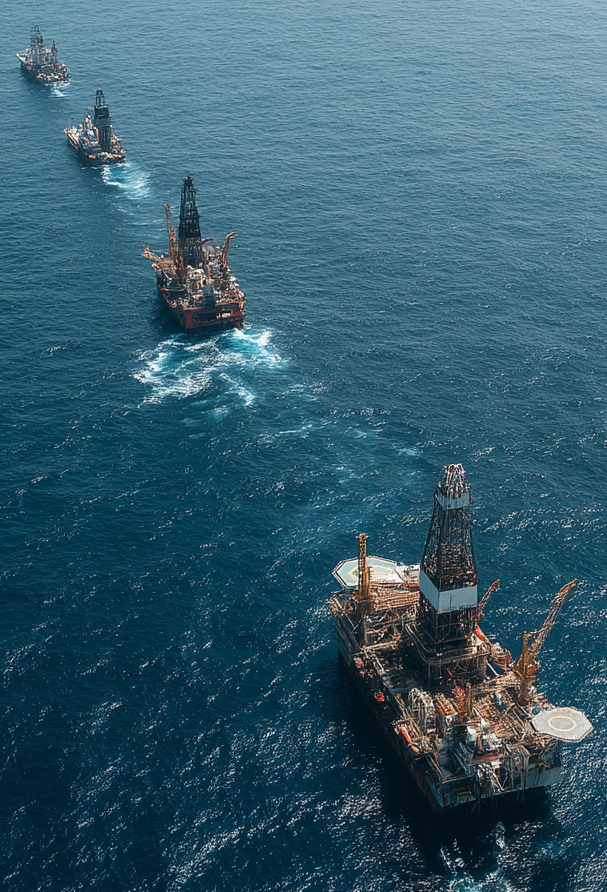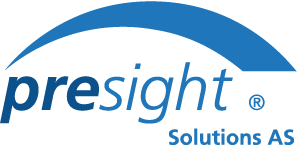Podcast - Understanding the Risks in Jack-up Rig Moves
Key Threats Identified
The analysis identified several significant threats that could lead to a loss of stability or control:
Adverse Environmental Conditions: Wind, waves, or currents exceeding the rig’s operational limits. Barriers include detailed site-specific metocean analysis, weather forecasting, clear operational limits in the Rig Move Procedure (RMP), and onboard monitoring.
Seabed Instability & Geotechnical Hazards: Unexpected seabed conditions like punch-through (leg suddenly penetrating a weak soil layer), rapid penetration, or uneven surfaces during leg placement, jacking, or preloading. Key prevention relies heavily on thorough site-specific geotechnical investigations (SSA) and careful preloading strategies, often with minimal air gap. Detection involves monitoring leg loads, penetration rates, and hull level.
Jacking System Malfunction: Mechanical, electrical, or hydraulic failures in the jacking system leading to uncontrolled leg movement or uneven jacking. Prevention includes rigorous design, maintenance (PMS), and pre-move testing. Detection systems like Rack Phase Differential (RPD) monitoring are crucial.
Human Error & Procedural Non-Compliance: Mistakes or deviations from procedures during critical operations like ballasting, navigation, jacking, or preloading. Barriers focus on comprehensive RMPs, competency assurance, pre-job planning, human factors engineering, and a strong safety culture encouraging reporting and adherence.
Collision: The rig colliding with other vessels, fixed installations, or hazards during transit or maneuvering. Prevention involves detailed passage planning, capable towing vessels, Bridge Resource Management (BRM), and adherence to navigation rules (COLREGs). Detection relies on radar, AIS, visual lookout, and VTS monitoring.
Loss of Watertight Integrity (Wet Tow): Water ingress into the hull during transit due to unsecured openings or structural failure, compromising stability. Thorough pre-tow inspections, hull maintenance, proper stability calculations, and minimizing free surface effects are key preventive measures. Detection includes tank soundings and bilge alarms.
Potential Consequences
If these threats materialize and barriers fail, the consequences can be severe:
Rig Capsizing/Sinking: The most catastrophic outcome, resulting in asset loss, potential fatalities, and pollution. Mitigation relies heavily on rapid damage control, emergency evacuation procedures, and effective Search and Rescue (SAR).
Structural Damage: Significant damage to the rig’s hull, legs, or jacking system due to excessive loads or impacts. Mitigation involves post-incident damage assessment, operational adjustments, and potential repairs.
Personnel Injury/Fatality: Harm to personnel from falls, impacts, crushing, or during evacuation. Mitigating barriers include safe muster areas, securing loose gear, fall protection, effective evacuation systems, and PPE.
Environmental Pollution: Release of fuel, oil, or hazardous materials. Mitigation involves robust tank design, emergency shutdown systems, spill response plans (SOPEP), and containment equipment.
Collision with Other Assets: The uncontrolled rig colliding with platforms or other vessels. Mitigation includes emergency anchoring/towing, alerting nearby facilities, and coordinated emergency response.

The analysis emphasizes that simply having barriers is not enough; their integrity must be actively managed. This involves defining performance standards for Safety Critical Elements (SCEs), rigorous maintenance, ongoing competency assurance, regular procedure reviews, and independent verification, often involving Marine Warranty Surveyors (MWS). Continuous learning through incident investigation and performance monitoring is vital for sustained risk reduction.
Jack-up rig moves are complex operations demanding meticulous planning and execution. This analysis highlights the critical threats, potential consequences, and the importance of robust, well-managed barriers. By focusing on areas such as procedural discipline, thorough site assessment, reliable equipment, human performance, and continuous learning, the industry can work towards minimizing the risks associated with these essential offshore activities.


